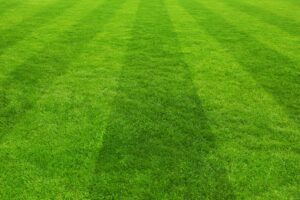Best hedging plants to grow in Jersey
Growing a hedge is a decision not to be taken lightly. It is a long-term investment providing you with privacy. In many cases, a well-established hedge can even increase property value.
Hedges are garden living walls dating back to ancient Rome. If you are serious about starting a new hedge in your garden, this guide is all you will need.
Let’s get started…
Hedge vs fence or wall
As opposed to the fence or a wall, the hedge:
- Is a cheaper alternative
- Serves as n natural windbreak, whereas the wall or fence create air turbulence
- Provides a natural environment for a wildlife such as birds and hedgehogs
- Provides an exceptional background for the flowering shrubs planted in front of it
- Requires regular maintenance
Formal vs informal hedge
Formal hedges are usually grown for their visual and structural effect. They are trimmed several times a year to maintain prestigious shapes. For the best effect, plants with the smaller leaves such as box, privet and yew are viable choices to establish a formal hedge. These types of hedges were widely used in Victorian gardens to create knot, or a parterre garden.
Informal hedges are usually grown wildly and do not require trimming very often. You can use any hedging plants or larger shrubbery, whether grown for the flower or a foliage interest. However, even these hedges can be trimmed regularly to achieve the formal look. Plants to use include thuja, hawthorn or even bamboo.

Our selection of hedging plants include
New Zealand broadleaf (Griselinia littoralis)
Griselinia littoralis is a fast-growing evergreen shrub with light green oval leaves. Very small yellow flowers are produced in the spring followed by production of dark purple fruit later in the season on female plants. This shrub can be used for both, formal and informal hedges and can tolerate temperatures to -15 degrees Celsius and be sheltered or exposed. It can tolerate well drained clay, sand, or loam soil of any Ph. For best results, plant in full sun or a partial light shade.
Griselinia is usually pest free but can be affected by black spot. Young plants can suffer from frost damage in the winter.
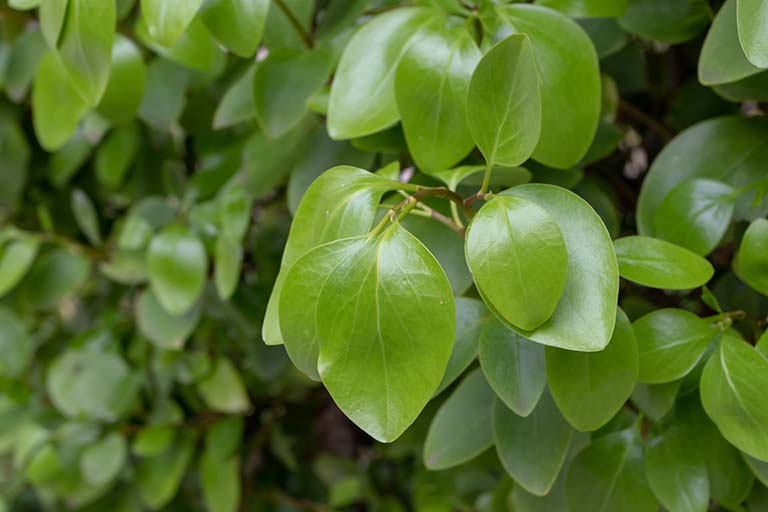
Cherry laurel (Prunus laurocerasus)
Cherry laurel is a vigorously growing large evergreen shrub with oval dark green leaves. White flowers are produced in the spring followed by dark fruit production in the summer or early autumn.
Note: the fruit is toxic and should not be ingested!
Prunus laurocerasus is fully hardy and does well in almost any soil type of any Ph. It can be planted in the sheltered or exposed sites and thrives in full sun or partial shade.
Cherry laurel can be trimmed regularly to create formal style or can be let grown to achieve informality. For its large growing habit, it is usually grown for privacy purposes.
Portuguese laurel (Prunus lusitanica)
Prunus lusitanica is a large shrub or a small tree with deep green ovate leaves growing on dark red stems. Clusters of white scented flowers are produced in the spring, followed by purple fruit in the summer.
Similarly to cherry laurel, the fruit is poisonous if ingested.
Well drained soil of most textures and Ph are suitable for planting. Portuguese laurel is hardy to -15 degrees Celsius and tolerates exposure of shelter if planted in full sun or a partial shade. It can be used in informal hedges, but formal appearance can be achieved if trimmed on a regular basis.

Bay tree (Laurus nobilis)
Bay tree is a very popular, widely grown large evergreen shrub bearing dark green leaves. Neatly trimmed bay tree plants can be used to create formal hedges or topiaries. However, if left unclipped, they can be used to provide an informal screening. Bay leaves are used for cooking, adding flavors to many dishes such as stews or soup. Small creamy flowers are produced in the spring.
Laurus nobilis tolerates frosts to -5 degrees Celsius, and thrives in well drained, humus rich soils of most Ph if planted in sun, partial shade and even light full shade.
Bay trees are usually prone to spots and attract pests such as bay suckers or scale insects.

Common box (Buxus sempervirens)
Common box is a slow growing large evergreen shrub with dark green leaves and small white flowers produced in the spring. It was widely used in Europe during the Roman and renaissance period in castle and monastery gardens to create formal parterres. During Tudor times, box plants were used in the knot gardens.
Box does well in well drained soil of most textures and Ph and also tolerates most aspects. It is fully hardy and can be planted on sheltered or exposed sites. It is potentially harmful if ingested.
Buxus sempervirens is susceptible to box blight, black spot, red spider mite, box sucker and caterpillar.

Common privet (Ligustrum ovalifolium)
Common or garden privet is a vigorous shrub of upright growing habit with vibrant green leaves. Small white flowers produced in late spring or early summer are magnet for the bees. Purple fruit formed later in the season attracts birds. Privet is mostly trimmed to formal shapes of any desired heights. Due to its vigorous nature, it should be trimmed several times a year.
Ligustrum is hardy to -10 degrees and tolerates most soil types and Ph. It should be planted in full sun or a partial shade whether sheltered or exposed. Honey fungus, mites and moths might be a problem.
Fruit can be harmful if ingested.
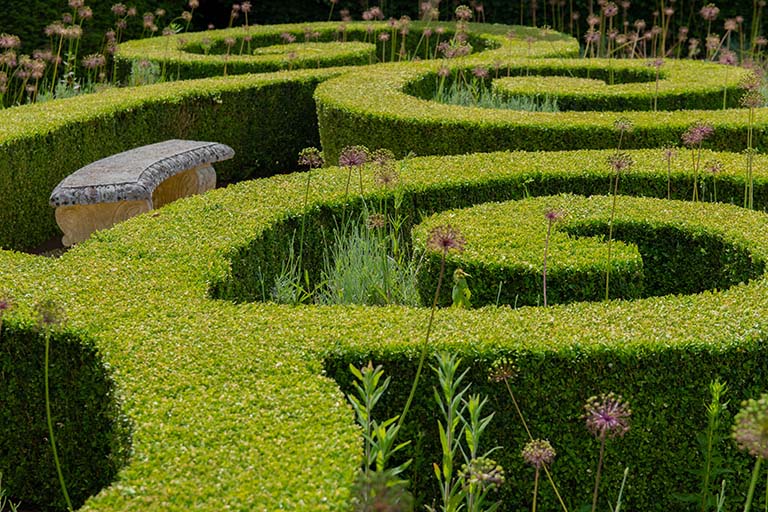
Red robin (Photinia ‘Red Robin’)
Photinia is an attractive medium sized evergreen shrub with bright red coloured leaves when young, turning green later. Large mass of white flowers is produced in the spring. It can be used to create both formal and informal hedges usually for privacy purposes and should be trimmed once or twice a year.
Red robin is tolerant of most well drained soil types. For best results, plant in full sun or partial shade, exposed or sheltered. It is hardy to – 10 degrees Celsius.
Leaves are often susceptible to black spot and fire blight and can be damaged by vine weevil.

Oleaster (Elaeagnus x ebbingei)
This is a fast-growing dense evergreen shrub with metallic green oval leaves formed on fresh growth. Fragrant, small white flowers produced in the spring are followed by purple berries later in the season. Oleaster is relatively easy to trim and can be used as a formal or informal hedge. Due to its vigorous growing habit, it requires cutting twice a year.
Elaeagnus does well in the seaside and tolerates temperatures to -10 degrees. It can be planted in most well drained soil types of any Ph, is drought tolerant and should be planted in full sun or partial shade in sheltered or exposed areas.
Oleaster is usually pests free but can be affected by black spot.
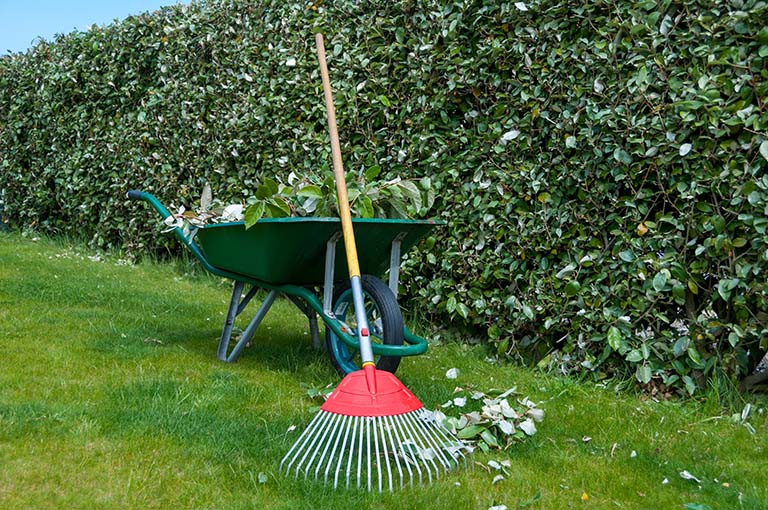
Japanese spindle (Euonymus japonicus)
Another large evergreen shrub with bushy, fast-growing habit and dark green oval leaves is Spindle. Small white flowers are produced in the spring followed by small fruit. Japanese spindles are very easy to grow and can be maintained formally or informally in various sizes and heights.
Euonymus can tolerate any soil type Ph and the aspect and is hardy to -10 degrees Celsius. It grows very well in exposed areas and the seaside.
All parts of the Japanese spindle are toxic and will cause discomfort if ingested. Diseases such as black spot and mildew as well as pests such as caterpillars, vine weevil or scale insects might be a problem.

Hawthorn (Crataegus monogyna)
Hawthorn is normally grown as an informal hedge to separate allotments or the fields. If left untrimmed, it is a small deciduous tree with small, dark green lobed leaves. Masses of lovely white flowers are produced in the spring followed by attractive red fruit in the autumn. The beautiful flower display can be seen from a distance.
Hawthorn is fully hardy and is very easy to grow. When planted in full sun or a partial shade, it tolerates all soil types.
Take extra care when handling hawthorn, the thorns produced on the stems can easily penetrate gloves and the red berries will cause stomach upset if ingested. Leaf spot, fire blight, mites and aphids might cause some trouble.

Copper beech (Fagus sylvatica ‘Purpurea’)
Copper beech is usually associated with large Victorian houses or estates but can be grown in any garden. It is a large deciduous tree with stunning deep purple foliage turning red in the autumn and tiny white or creamy flowers formed in the spring. Fagus is usually regularly trimmed to formal shapes.
Beech originates from the woodlands and grows best in well-drained soil of all textures and Ph. Plant in full sun or partial shade in sheltered or exposed sites. Coral sport, root rot and aphids may cause problems.

Emerald arborvitae (Thuja occidentalis ‘Smaragd’)
Thuja is an evergreen conifer of narrow, pyramidal growing habit. If used in formal hedges, due to its vibrant green color, it is one of the nicest hedges you can come across. However, if left unmaintained, it forms a naturally perfect fastigiate shape reminiscent of Mediterranean style gardens. They rarely grow wider than one meter, making them perfect habitants for narrow spaces.
For best results, plant thuja in well drained, humus rich soil of neutral to acid Ph and the full sun sheltered spot. Only start trimming thuja hedges after they have reached the desired height.
Rarely, thuja can be affected by the twig blight. If ingested, it is toxic for dogs and especially horses.

English yew (Taxus baccata)
Yew was a massively popular plant to create formal hedges, mazes and topiaries in English gardens during the Victorian period. Due to its slow growing habit it very well responds to pruning. Tiny flowers are produced in the spring, followed by fleshy red fruit later in the season.
Beware: all parts of Taxus can be lethal if ingested!
You can grow Yew in full sun, partial and full shade in sheltered or exposed areas. It tolerates most well-drained soil types and Ph. And is fully hardy.
Yew trees are susceptible to root rot, vine weevil, gall mites and scale insects.

Leylandii (x Cupressocyparis leylandii)
This is a very large, vigorously growing evergreen conifer. Most people get discouraged when it comes to Leylandii but there are hidden benefits to this plant. It is a bigeneric hybrid, specifically engineered to promote vigorous growth to provide privacy and the root growth to support soil from erosion. Leylandii is best kept neatly trimmed to formal forms.
Plant in full sun in well drained soil of neutral or acid ph. It is a fully hardy plant thriving in both sheltered and exposed sites.
A little skin irritation may be caused during trimming. Diseases such as honey fungus and canker, and pests such as aphids and scale insects may be a problem.
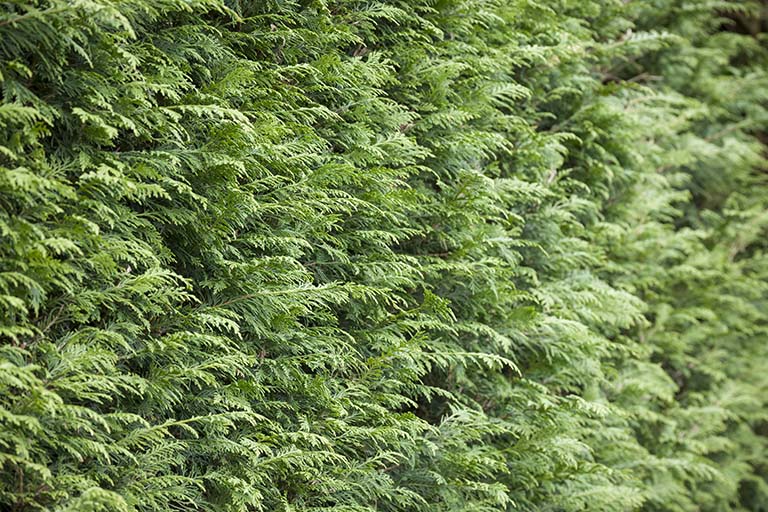
Looking for garden help and inspiration?
Get in touch today to arrange your personalised consultation.



